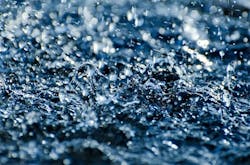Gerry Feldmeier is regional drives sales manager for Eaton. Nicole George is product manager of pumping variable frequency drives - industrial controls division for Eaton. Feldmeier and George can be reached at [email protected].
undefinedA lot happens in a day at a water treatment facility. Millions of gallons of water run through the plant each day, placing an enormous responsibility on the operations and maintenance teams to ensure the process proceeds without disruption. Keeping the plant running smoothly is a top priority and resources spent troubleshooting problems, repairing equipment or paying penalties for power quality concerns is not only inefficient but risks water output; a critical requirement to keep a municipality functional.
While eliminating all potential setbacks is not possible, it is possible to simplify some of the decision-making that impacts the plant operations. One of these decisions is selecting the appropriate harmonic mitigating solution for the plant’s variable frequency drive (VFD) applications. Harmonics are distorted electrical waveforms that introduce inefficiencies into the electrical system causing inefficiencies in the power distribution system, damage to transformers, possible interference of monitoring devices and incurred fees from the local utility.
The Institute of Electrical and Electronics Engineers (IEEE) established the IEEE-519 guideline written from the point of view of electrical utilities, and this guideline establishes the level at which electrical energy is determined “clean,” so not to pollute the utility power or affect other users of that power. Designing and selecting the right harmonic mitigating products to meet IEEE5-19 can be confusing, and often the solution procured is over-designed for the application resulting in added hardware costs that could have been avoided.
Selecting the right harmonic mitigating solution can be simplified to the power range of the VFD and the type of input power. Simply put, IEEE-519 can be achieved using various technologies, including inductive reactors with a 6-pulse drive, passive filters, multi-phase converters and active front end (AFE) drives.
Sometimes where the plant is located will dictate the type of mitigation that should be used. If the plant is in a remote location where unstable or poor power quality can be expected, then using a multi-phase drive is desirable because the solution is more robust and able to withstand more disturbances than other solutions. Multi-phase solutions also are better suited for applications where standby generation is required and the VFDs represent a large percentage of the load. Passive filter and active front end drives would be better suited for applications where the power is extremely stable and the VFDs represent a smaller percentage of the overall load.
Understanding harmonic mitigation solutions does not need to be intimidating. When specifying the right variable frequency drive solution for the application, remember H.I.P: horsepower and input power. Applying these guidelines will help to narrow down the options and reduce the total cost of ownership on the plant.


